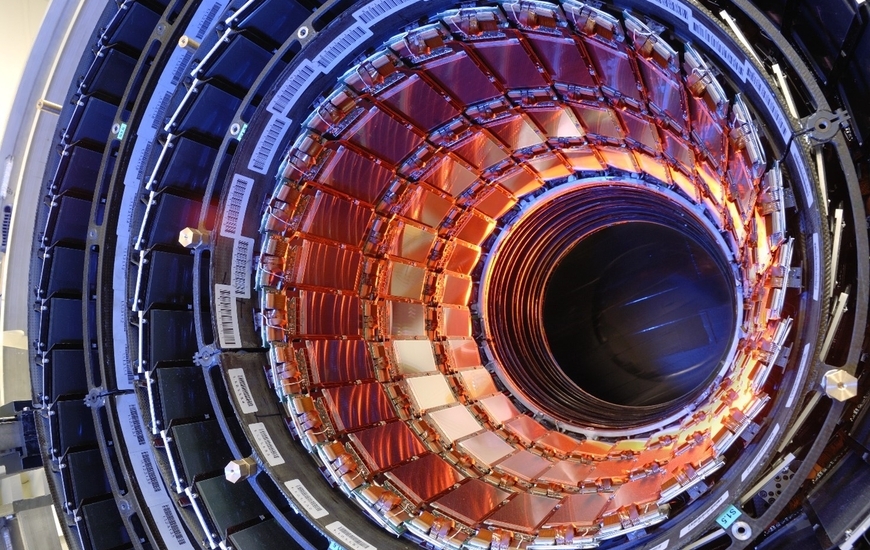by FRANCESCO NOTO*
The field of elementary particle physics requires the use of cutting-edge technologies. The construction of particle accelerators and that of the equipment that exploit their experimental areas can be compared, in terms of technological content, to that of space enterprises.
These devices are organized into different functional units (detectors) contained one inside the other. Each detector is designed for a specific purpose and not to degrade the performance of those around it. In general, all detectors exploit, in various ways, the interaction of particles (charged or neutral) with matter. Proceeding from the inside to the outside of the entire apparatus, we can identify three main categories of particle detectors: trackers, calorimeters and muon detection systems.
For example, the engineering of trackers is mainly complicated by the requirement for high dimensional stability under operating conditions. This request is essential for the very exploitation of the detector since a good tracer will provide geometric information which is all the more reliable and accurate, the more accurate is the knowledge of its own internal geometry. ln this context, the use of composite materials is growing, thanks to the mechanical properties that laminates exhibit and the possibility of sizing these properties according to the loads or specific working conditions.
The geometric tolerances and the required mechanical stability limit the choice of materials to be used in the support structures of the plotters. The most limiting factor certainly remains the request for light and rigid materials at the same time. From an operational point of view, there are also the difficulties associated with the shape of the support being designed (which must guarantee access to the sensors and their maintenance), the availability of the chosen material, the type of process to which it is subjected, to the safety of the people who have to handle it and finally to the overall cost that these operations entail.
The useful classification parameters to consider are mainly the specific stiffness (E/ρ, where ρ is the density of the material), to evaluate the mechanical stability of the material, and the product of the Young's modulus by the radiation length (E⋅X0, where X0 is the radiation length), to evaluate their stiffness and transparency to radiation, the latter of fundamental importance for particle detectors.
From the specific stiffness values of various materials, known in the literature, it can be deduced that composite materials such as carbon fiber (Carbon Fiber Reincorced Plastics CFRP) can be placed at specific stiffness values comparable or even higher than those of some metals with low densities such as aluminum or beryllium, these considerations justify the great use that these materials are having in the field of high-energy physics.
Beryllium, which would be the metal chosen for values of specific stiffness (E/ρ) and transparency to radiation (E⋅X0), has higher production and processing costs and involves greater safety problems since it must be considered as a material toxic for concentrations higher than 30 mg/m3 and potentially carcinogenic. Carbon fibers, despite the lamination process requiring the development of particular moulds, remain competitive in terms of production costs and involve fewer safety problems.
A further feature in favor of the use of CFRP is the possibility of obtaining very low coefficients of thermal expansion (CTE) and this is a clear advantage for the construction of structures with high mechanical stability.
In conclusion, in the light of these considerations, the use of CFRP is currently widespread, and examples are the Tracker Inner Barrel of the CMS experiment at CERN in Geneva, which in 2012 made the discovery of Higgs’ Boson, the containment AISHa’s chamber source installed at the Southern National Laboratories, and many others.
In the image: first half of CMS inner tracker barrel (Maximilien Brice - CERN)
* Technologist at INFN LNS and adjunct professor at Catania's University
-

-
21 February 2023























